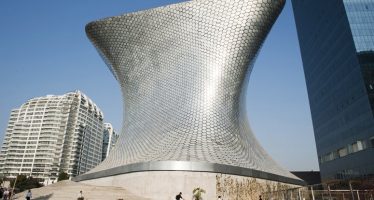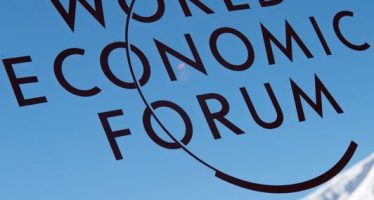The Race by Brazil’s New Oil Tycoons
The race is on between Brazil’s billionaire oil tycoons, Antonio Augusto de Queiroz Galvao, Marcio Rocha Mello and Eike Batista to see who will come out ahead in the race of extraction in Latin America and Africa. But it is not just about extraction they are creating new growth opportunities for the emerging oil service sector in Brazil.
By Marco dos Santos
On a cold morning in January this year in New York, the Brazilian billionaire Eike Batista made a challenge to Marcio Rocha Mello, owner of HRT Holdings and its competitor in the oil sector, in the hall of the New York Palace luxury hotel:
– “You need to produce that oil you have promised, you know, Marcio?”, Batista said.
– “I will be in production before you, Eike”, Mello said.
– “I don’t believe that!”, said the owner of OGX.
Both were in the United States to attract investors to their business of the black gold, the new frontier of wealth in Brazil in the XXI century. The pressure on the two companies with their billion-dollar market caps to begin to deliver the promised oil rose last week with the debut of a new competitor in the stock market, Queiroz Galvao Exploration and Production (QGEP).
The company, based in Rio de Janeiro, raised $1.5 billion in its IPO (initial public offering) and has already hit the market as the fourth largest producer in the country, second only to Petrobras and multinationals Shell and Chevron.
The company owns 45% of the Manati field, Camamu basin, off the coast of Bahia, which produces 50,000 barrels of oil equivalent per day and has eight exploration blocks, including the pre-salt reservoirs, in the Santos Basin and Jequitinhonha .
With the arrival of the QGEP three private oil companies in Brazil have reached a market capitalization of more than $70 billion.
In other words: the new breed of business tycoons of Brazilian oil, Eike Batista, Marcio Mello Queiroz Galvao and family already account for 20% of the giant Petrobras, created more than half a century.
Plus, the club of powerful businessmen will only grow over the next ten years, with investments estimated at U.S. $ 600 billion for the oil sector during this period.
Newcomers, they are – but not exactly inexperienced. “Our industry experience long predates the establishment of the company. We provide services for 30 years for oil and gas chain and are in operation for fifteen, “said the president of QGEP, Antonio Augusto de Queiroz Galvao, at the ceremony that marked the debut of its shares held at Bovespa in the old center of state capital, last Wednesday, 9.
The group Queiroz Galvao, which owns the fourth largest builder in the country and operates in sectors like roads, energy, steel and agribusiness, was founded in 1953 in Recife.
Today the company has approximately 30,000 employees and revenues over $7 billion per year. With its new oil and gas focus, it has potential to grow even more. “A business group that knows Brazil for so long could not stay out this time of so promising oil and gas industry, notably the discovery of the pre-salt,” said the businessman.
In the documents delivered to investors QGEP reports that will use the money raised in the IPO to buy stakes in exploration blocks in the Campos, Santos and Espirito Santo.
Although the price of a barrel of oil is high, Queiroz Galvao raised less than the $1.8 billion financing originally planned, due to nervousness in the international market before the crisis in Egypt. Against this backdrop, capturing $1.5 billion in funding is already a success.
The QGEP reserves are small, compared to competitors as it has 345 million barrels of oil equivalent in resources (adjusted by the probability of success), while OGX has reserves estimated at 6.7 billion barrels and HRT, about 1.5 billion barrels. Petrobras’ reserves are totaling about 15 billion, but this number could double when adding in its huge reserves of pre-salt layer. Extracting oil is a task for giants.
In the best style of the elite of contractors, the owners of the Queiroz Galvao speak little. Antônio Augusto, president of the board of the group, is the son of the patriarch Antonio Queiroz Galvao, who founded the company with the Mario brothers, John and Dario.
Engineer from the Federal University of Pernambuco, has specialized courses in oil in Texas and Louisiana in the United States. It is called by the president of QGEP, Jose Augusto Fernandes, a “great boss and leader.” The debut on the stock reinforced its low profile style.
When the HRT raised R $ 2.6 billion in its IPO in November last year, Marcio Mello took dancers and musicians of the Beija Flor samba school to the floor of the Bovespa.
Nothing is further from the discreet ceremony of Queiroz Galvão, Antonio Augusto wept as he thanked his parents and wife, who were present. The soundtrack was in charge of a single group of choro. “They are much more restrained in their presentations to investors,” says one of the financial advisors of the entrepreneur.
IPO of HRT: The company raised U.S. $ 2.6 billion and should capture other $ 500 million in Warrants
Monosyllabic, Antonio Augusto does not agree to be called the new Brazilian oil tycoon and even save the word “no” when asked by MONEY on your new status – it just makes one shake his head. Gentle, does not give interviews, but agrees to pose for the photos of this article.
Dealing with the demands of a public company will be a major challenge for the group, which has a conservative culture, even for the closed patterns of major construction.
While OGX and especially HRT themselves as competitors of Petrobras, Queiroz Galvao says that one of its greatest competitive advantages is its “good relationship with Petrobras.” However, some analysts believe that this proximity is indeed a problem, because it makes QGEP more dependent on the state.
The arrival of QGEP was courteous received by the competition. “I think it’s great to have competitors in the bag. The market is aggressive and punitive, and like charges results we will charge them too, “said the magnate Eike Batista.Batista put down the gauntlet and also said OGX is to start producing oil in August in a pit of high productivity in shallow waters of the Campos Basin.
“We passed our test of Sao Tome,” he said, referring to the announcement that the well has Waimea Horizontal flow of 40,000 barrels of oil per day, one of the highest productivity rates in the Campos Basin.
The extraction cost per barrel is very low, $8, because the well is located in shallow water – and as much a reason to celebrate. “Hellooo! We will have a very high margin and next year the cash flow will be $ 1 billion, “said Batista, hitting the most common criticisms of the market to their businesses: they do not generate cash. For now, OGX is in red with losses last year.
Always optimistic, the business continues with big plans. OGX is to be listed in London during the second half of this year, in order to allow the inflow of investments from foreign pension funds.
The company already was worth more than $70 billion in market cap, but dropped to $ 57 billion in mid-February. This year, the papers fell 10%, reflecting disappointment with the fact that Batista had not completed the sale of stakes in their oil wells to strategic investors, which was scheduled for the end of last year.
Batista says he is still negotiating with many groups, but no date has been set to close a deal. He credits the loss of market value to the “rumors” about his health and the possible stampede of executives from the group after the resignation of the President of OGX, Rodolfo Landim, in 2009.
Rocha Mello, who challenged Baptist in New York, has been more cautious and, since the HRT went public last November, tries to demonstrate that the onset of oil production is near. HRT due by the end of the year with production between 500 and 5,000 barrels per day in five wells in the basin of the Solimões in the Amazon.
“With our knowledge of operations, we have control of our destiny,” says Rocha Mello. In addition to the participation of 51% in 21 wells in the Solimoes Basin, HRT controls another five in Namibia.
“We are focused on the Solimoes Basin and Africa. We want to play the next rounds of the National Petroleum Agency (ANP) outside the pre-salt, and grow in Namibia, Congo and Angola. He also intends to list the company on foreign stock exchanges, starting with Canada in 2012.
Rocha Mello is a geologist who made a career during 24 years at Petrobras, where he received the nickname of Mr. Go Deeper for writing scientific articles already in 2000 pointing to the possibility of deposits below the salt layer.
He was the founder of the first laboratory geochemistry of the state. He said the investment makes sense in Africa. “The continents are similar, you can find pre-salt reserves in Namibia and Angola,” he says. Some see this African option with caution. Rocha Mello refutes criticisms. “Namibia is one of the most stable democracies in Africa.”
Modesty, in fact, is not his forte: Rocha Mello says that his will be the largest independent oil company in the world and already next year will have a market value of $30 billion. Up until now, he has managed to convince the market. The HRT is the only company in the sector to rise in the stock market this year: 4.5%.
But so much euphoria about the oil will not be fleeting, with a view to increasing investment in renewable energy and the limitations of emissions traded internationally? Experts and the International Energy Agency (IEA) said no.
“The share of oil in the world energy matrix should remain high for long, as well as prices,” said oil analyst at consultancy Trends, Walter de Vito.
In its latest report, the IEA predicts that the era of cheap oil is over. In 2035, predicts the price of a barrel of oil should be between $ 90 and $ 140, depending amongst others on the policies adopted against carbon emissions.
It is these data that excite investors. The next wave of companies coming to sell shares on the stock exchanges are the providers of services to the oil and gas chain. One such company is Petroserv, which operates equipment and the distribution of oil.
Odebrecht Oil & Gas, an arm of the Odebrecht group in the industry, aimed to list, but instead received $400 million in investment from the sovereign wealth fund Temasek, Singapore.
In the U.S., services companies represent 35% of the capitalization in the oil sector and in Norway, 80%. In Brazil, the oil service companies represent less than 5%. With the oil exploration and production tycoons racing so busy, the Brazilian oil service sector could have a promising future of growth with its own tycoons yet to emerge.
You may have an interest in also reading…
CFI.co Meets the CEO of Banco del País: María del Rosario Selman-Housein
For the past six years, María del Rosario Selam-Housein has stood at the helm of the Banco del País, expertly
Let Mexico’s Moguls Battle
The Economist (04/02/12): Mexico suffers from two near-monopolies. It should let them fight each other IN A futuristic art gallery
Fata Morgana in the High Alps: Musings on Davos
While currencies crumbled in emerging markets ranging from Turkey to Argentina, the world’s mostly self-appointed leaders and assorted hangers-on gathered






















































































